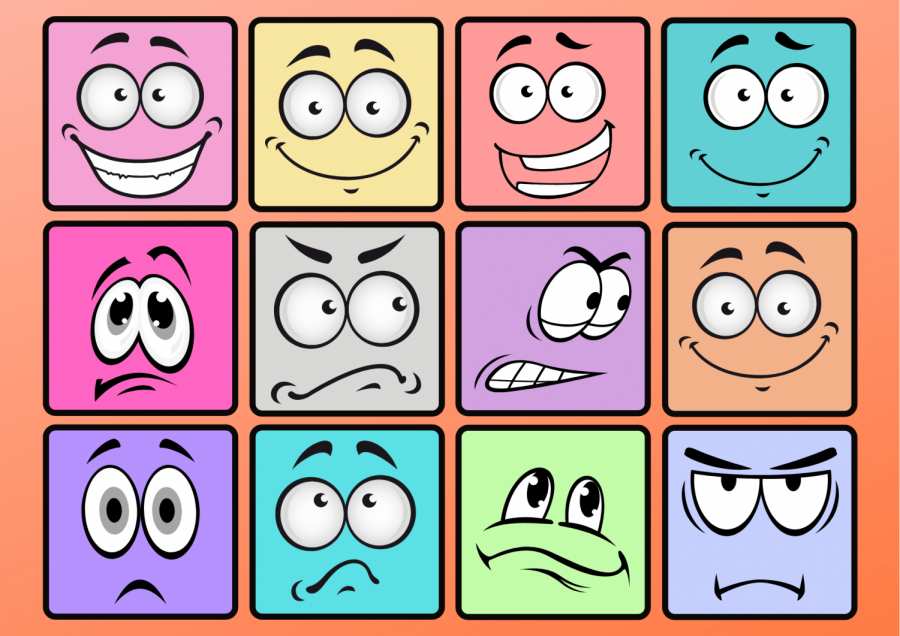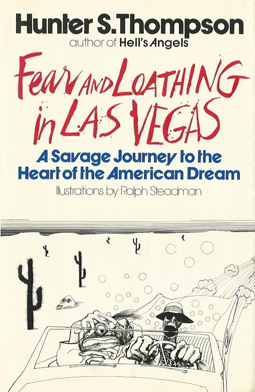The 6 Basic Types of Emotions and Their Effects on Behavior
This shows some of the basic emotions that can be experienced. It gives a glimpse into how many emotions there are and how what they might look like.
“I would define emotion as a way to express your feelings to the people around you,” senior at Wayzata High School Chloe Peterson said.
According to the Department of History and Civilization, emotions have been an object of study for many years. The 1940s and the 1970s was where emotions started becoming a topic of conversation. Today, emotions are becoming more and more prevalent in society.
In the 1970s, psychologist Paul Echman identified six basic emotions that he thought were universally experienced by all humans. The emotions he recognized were happiness, sadness, fear, disgust, anger and surprise. He eventually expanded his list of basic emotions to include things like pride, shame, excitement and embarrassment.
“In my opinion, an emotional response is a physical reaction your body has to an emotion evoking situation. It is the physical reaction in correlation with the mental reaction you have to something,” junior at Orono High School Libby Engrebretson said.
Psychologist Robert Plutick put together a “wheel of emotions” that was similar to the color wheel. Emotions can be put together to form different feelings, like how colors can mix together to create other shades. According to this theory, the basic emotions act together. More complex emotions are formed by the mixings of these basic emotions.
A 2017 study found that there are far more basic emotions than believed. The study, published by the Proceedings of National Academy of Sciences, found that there are 27 different categories of emotion.
Happiness is often defined as a pleasant emotional state that is characterized by feelings of joy, satisfaction and well-being. Research has increased, including a branch of psychology known as positive psychology to help explain happiness. Happiness is sometimes expressed through facial expressions, such as smiling, body language, like relaxing and tone of voice, being the way someone sounds when speaking.
“When my friends and I decided to buy friendship necklaces I was very happy. I had a big smile on my face,” junior at Minnetonka High School Caitlyn McKirahan said.
People have long believed that happiness and health are connected, and research has supported the idea that happiness plays a role in physical and mental health. According to Elizabeth Lawrence, the professor of Sociology at the University of Nevada, Las Vegas, said that happiness has been linked to a lot of different outcomes including increased longevity and increased marital satisfaction. Lawrence continues to explain that unhappiness has been linked to poor health outcomes and conditions.
Dr. Owen Wolkowitz is a clinical and translational research psychiatrist and Professor of Psychiatry at the University of California, San Francisco. Wolkowitz found that stress, anxiety, depression and loneliness have been linked to lowered immunity, increased inflammation and a decreased life expectancy.
Sadness is defined as an emotional state characterized by feelings of hopelessness, disappointment, disinterest and grief. Sadness can be expressed in many different ways including crying, quietness and a withdrawal from others.
Wolkowitz finds that sadness can often lead people to engage in negative coping mechanisms. Some examples of these coping mechanisms include ruminating and self-medication.
Ralph Adolphs, a psychologist studying the neural and psychological basis for human behavior, explains that you go through something known as the fight or flight response. Your muscles become tense, your heart rate increases and your mind becomes alert prompting your body to run from the danger or stay to fight the danger.
Adolphs explains that the emotional response from this type of emotion includes facial expressions, such as widening of the eyes, body language, attempts to hide or flee from the situation and physiological reactions, such as a rapid heartbeat.
“About a month ago, I almost hit a deer as I was driving. I started freaking out and panicking. It was very scary,” senior at Lakeville South High School Maci Tutewohl said.
In Adolph’s study, The Biology of Fear, he says that repeated exposure to a feared object or situation can lead to familiarity and assimilation, which can reduce feelings of anxiety and fear. This is the idea behind exposure therapy. People are gradually exposed to things that frighten them in a controlled manner. Eventually, the feelings of fear begin to decrease.
Disgust is one of the original basic emotions described by Eckman. Disgust can be displayed by body language, turning away from an object, a physical reaction, such as vomiting or facial expressions, such as curling the upper lip.
According to Megan Oaten, a psychologist at Macquarie University in Sydney Australia, found that this emotion evolved as a reaction to food that could be harmful or fatal. People can also experience disgust when they see others engaging in behaviors they find immoral or distasteful.
“Some of the comments I have heard regarding people or social topics are disgusting. Their disrespect towards others makes me feel disgusted,” senior at Orono High School Sam Lieberman said.
Anger is often expressed through facial expressions, such as frowning, body language, such as looking away or aggressive behaviors, such as hitting or throwing objects. In a book written by Miriam M. Gottlieb, The Anger Self: a Comprehensive Approach to Anger Management, anger has been linked to heart disease and diabetes. It has also been linked to behaviors that pose potential health risks such as aggressive driving, alcohol use and smoking.
Surprise is another one of the six basic emotions described by Eckman. Surprise is characterized by a startled response following something that happened unexpectedly. Eckman found that surprise is shown in facial expressions, such as opening the mouth, physical reactions, such as jumping or verbal reactions, such as screaming or gasping.
Gottlieb explains that surprise can have important effects on human behavior. Research has shown that people tend to notice surprising events. She explains that surprise is another type of emotion that can trigger a fight or flight response. When startled, people may experience a burst of adrenaline that helps prepare the body to fight or flee.
The six basic emotions described by Eckman are just a portion of the many different types of emotions that people experience. Eckman’s theory suggests that these core emotions are universal throughout all cultures. Other theories and new research continue to explore the many different types of emotions.
Dacher Keltner, faculty director of the Greater Good Science Center, found that 27 distinct dimensions, not six, were necessary to account for the way people are reported feeling.
Alan Cowen, the study’s lead author and doctoral student in the neuroscience department at UC Berkeley, suggests that better clarifying our emotions can help scientists, psychologists and physicians learn more about emotions. By building a better understanding, he hopes that researchers can develop stronger treatments for psychiatric conditions.

Hello! My name is Tillie Hogenson. This is my second year on The Spartan Speaks. I am very interested in the newspaper and love meeting new people with...











